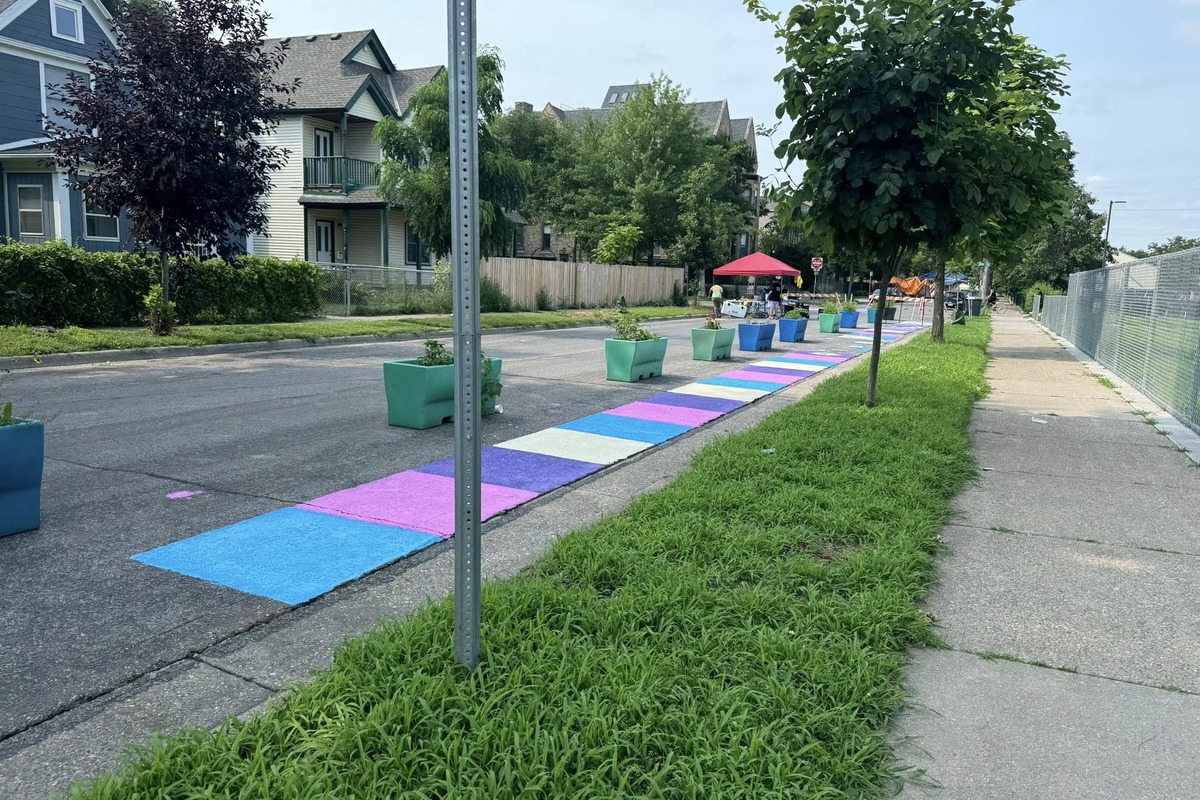Minneapolis is spearheading a transformative initiative aimed at significantly bolstering pedestrian safety within the culturally rich Little Earth neighborhood, a vital hub for many native residents. This groundbreaking project, a collaborative effort, underscores a progressive approach to urban development where community well-being and artistic expression converge to create safer public spaces.
The Minneapolis Health Department has partnered meticulously with the Little Earth Residents Association and the Native Youth Arts Collective, forging a powerful alliance that epitomizes community-centric urban planning. This collaborative framework ensures that the improvements are not merely top-down mandates but are deeply rooted in the needs and aspirations of the very people they serve, fostering a sense of ownership and cultural reverence.
Central to this initiative are a series of innovative urban art initiatives designed to both beautify and functionally enhance the streetscape. Vibrant pavement paintings and captivating new murals are being strategically installed, transforming mundane pedestrian pathways into visually stimulating corridors. These artistic interventions serve a dual purpose, enriching the aesthetic appeal of the neighborhood while subtly influencing driver behavior.
Beyond the artistic elements, tangible infrastructure improvements are being implemented to actively calm traffic and safeguard those traveling by foot. The introduction of robust traffic bollards acts as a physical deterrent to speeding, while strategically placed midblock crosswalks provide clearly designated and safer crossing points. These measures are critical for creating a more predictable and secure environment for pedestrians.
The focus on the Little Earth neighborhood is particularly significant, acknowledging its profound cultural importance to its native inhabitants. This initiative transcends typical urban renewal projects by integrating cultural sensitivity and youth engagement through the Native Youth Arts Collective, ensuring that the improvements resonate authentically with the community’s identity and heritage.
The ultimate vision of this multi-faceted project extends beyond immediate safety enhancements. By integrating art with essential traffic calming measures, Minneapolis aims to foster a more harmonious coexistence between vehicles and pedestrians. The goal is to cultivate an urban fabric where residents can navigate their environment with increased confidence and security, contributing to an overall higher quality of life.
This comprehensive approach by the city of Minneapolis sets a compelling precedent for other urban centers seeking holistic solutions to complex city planning challenges. It demonstrates that effective community safety projects can be achieved through innovative partnerships, thoughtful design, and a profound commitment to the well-being of all residents.
The synergy between health, art, and infrastructure highlights a forward-thinking model for urban revitalization. It’s a testament to how local government, community organizations, and artistic groups can unite to address critical public safety concerns while simultaneously enhancing the cultural vibrancy and livability of neighborhoods. This ongoing commitment promises enduring positive impacts for the area.






Leave a Reply